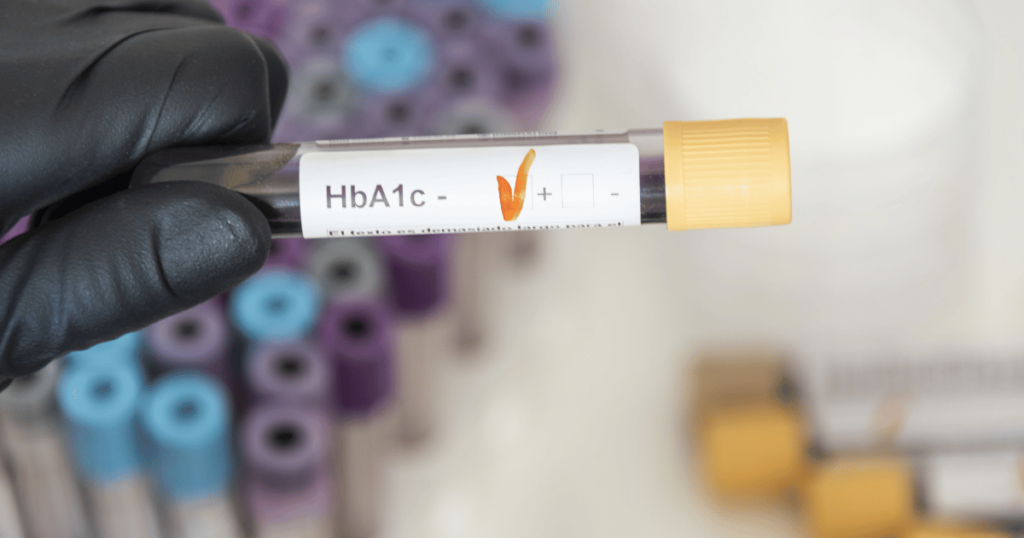The Link Between HBA1C Levels and Prediabetes: In recent years, the conversation around diabetes management has increasingly focused on the critical stage preceding the condition, known as prediabetes. Central to this discussion is the role of HBA1C levels, a key marker in identifying and managing this early stage of blood sugar imbalance. This comprehensive article aims to explore the intricate link between HBA1C levels and prediabetes, offering insights into how monitoring these levels can play a pivotal role in preventing the progression to Type 2 diabetes.

Understanding HBA1C and Prediabetes
Before delving into the relationship between HBA1C levels and prediabetes, it’s essential to understand what these terms mean.
What is HBA1C?
HBA1C, also known as glycated hemoglobin, is a form of hemoglobin that is chemically linked to glucose. The HBA1C test measures the average blood glucose levels over the past two to three months, providing a long-term view of an individual’s blood sugar control.
What is Prediabetes?
Prediabetes is a health condition where blood sugar levels are higher than normal but not high enough yet to be diagnosed as Type 2 diabetes. It’s a warning sign that indicates a higher risk of developing diabetes and associated complications.
The Role of HBA1C in Diagnosing Prediabetes
The HBA1C test is one of the primary tools used to diagnose prediabetes. According to the American Diabetes Association (ADA), the following HBA1C ranges are indicative of one’s glycemic status:
- Normal: Below 5.7%
- Prediabetes: 5.7% to 6.4%
- Diabetes: 6.5% or higher
An HBA1C level within the prediabetes range suggests that an individual’s blood sugar levels have been consistently higher than normal, signaling the need for lifestyle changes and possibly medical intervention.
Why Monitoring HBA1C Levels is Crucial
Identifying prediabetes early through HBA1C testing is crucial for several reasons:
- Preventing Progression to Diabetes: Early intervention can significantly reduce the risk of developing Type 2 diabetes.
- Reducing Health Risks: High blood sugar levels, even in the prediabetes stage, can increase the risk of heart disease, stroke, and other complications.
- Lifestyle Modification: Knowing your HBA1C levels can motivate necessary lifestyle changes to improve health.
Risk Factors for Elevated HBA1C Levels
Several factors can contribute to elevated HBA1C levels and the risk of prediabetes:
- Genetics: A family history of diabetes can increase the risk.
- Weight: Being overweight, particularly with excess abdominal fat, is a significant risk factor.
- Physical Inactivity: Lack of regular exercise can contribute to higher HBA1C levels.
- Diet: A diet high in processed foods and sugar can lead to increased blood sugar levels.
- Age: The risk of prediabetes increases with age, particularly after 45 years.
Managing and Lowering HBA1C Levels
If your HBA1C levels fall into the prediabetes range, there are several strategies to manage and potentially lower them:
Diet and Nutrition
Adopting a balanced diet rich in whole foods, fiber, lean protein, and healthy fats can help regulate blood sugar levels. Reducing the intake of processed foods and sugars is also crucial.
Regular Physical Activity
Engaging in regular physical activity, such as brisk walking, cycling, or swimming, can improve insulin sensitivity and help lower blood sugar levels.
Weight Management
Losing weight, especially if you’re overweight, can have a significant impact on HBA1C levels. Even a modest weight loss of 5-10% can improve glycemic control.
Regular Monitoring
Regularly monitoring blood sugar levels at home can provide immediate feedback on how lifestyle changes are affecting your HBA1C levels.
Medical Consultation
Consulting with healthcare professionals for personalized advice and potential medical interventions is essential.
The Impact of Lifestyle Changes on Prediabetes
Lifestyle changes are often the first line of defense in managing prediabetes. Studies have shown that diet and exercise modifications can reduce the risk of progressing to Type 2 diabetes by up to 58%.
Challenges in Managing Prediabetes
Managing prediabetes and lowering HBA1C levels can be challenging due to:
- Lack of Symptoms: Prediabetes often has no clear symptoms, making it easy to overlook.
- Lifestyle Overhaul: Making significant lifestyle changes requires commitment and consistency.
- Information Overload: The abundance of information available can be overwhelming and confusing.
Conclusion
The link between HBA1C levels and prediabetes is a critical aspect of diabetes prevention and management. Understanding this relationship and taking proactive steps to manage HBA1C levels can significantly reduce the risk of developing Type 2 diabetes and improve overall health. Regular health check-ups, lifestyle modifications, and staying informed are key to effectively managing prediabetes.
Note: This article is intended for informational purposes only and does not replace professional medical advice. Consult with healthcare professionals for individualized health guidance and treatment plans.
Everything You Need To Know About Gestational Diabetes You don’t wanna miss this Simple Explanation



